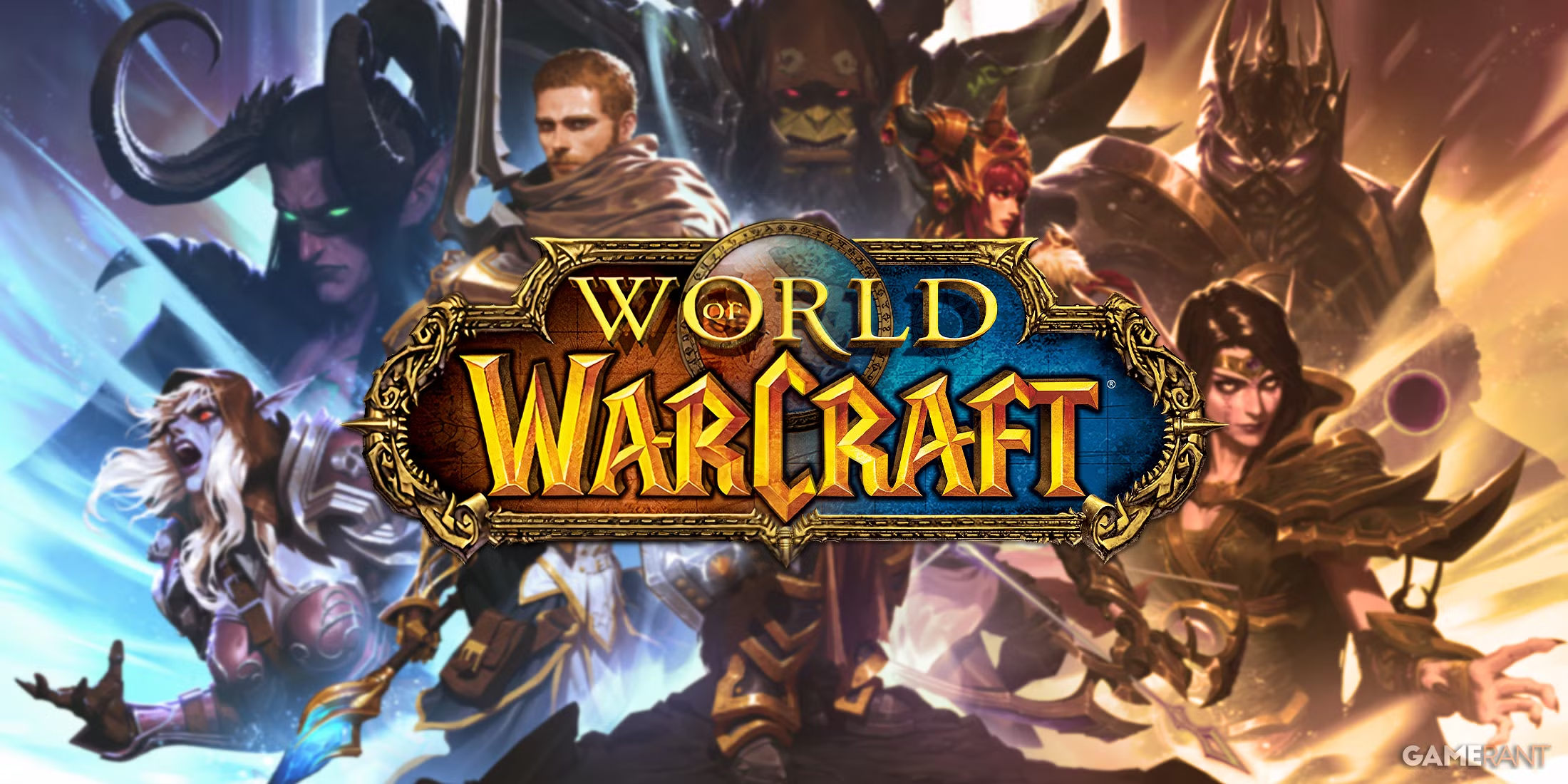The Origins of World of Warcraft: A Journey into Azeroth

Blizzard Entertainment’s World of Warcraft (WoW) is one of the most successful and influential massively multiplayer online role-playing games (MMORPGs) in gaming history. Its rich lore, expansive world, and captivating gameplay have enthralled millions of players since its release on November 23, 2004. However, the game’s journey from concept to global phenomenon is a fascinating tale of innovation, dedication, and risk-taking. Let’s explore the origins of World of Warcraft and how it became a cultural cornerstone.
The Spark of Creation: Blizzard’s Foundations
Blizzard Entertainment, the creator of WoW, was founded in 1991 by Allen Adham, Michael Morhaime, and Frank Pearce under the name Silicon & Synapse. The company initially focused on developing games for other publishers, but by the mid-1990s, it began creating original titles.
Blizzard’s first major success was Warcraft: Orcs & Humans in 1994, a real-time strategy (RTS) game set in the fictional world of Azeroth. Its blend of strategy, storytelling, and a distinct fantasy aesthetic laid the groundwork for what would eventually become World of Warcraft. The game spawned sequels, including Warcraft II: Tides of Darkness (1995) and Warcraft III: Reign of Chaos (2002), which expanded the lore and introduced new factions, characters, and conflicts that would later be pivotal in WoW.
The Warcraft franchise’s growing popularity demonstrated Blizzard’s ability to create immersive worlds. However, the idea of transitioning from RTS games to an MMORPG was a bold leap for the company.
The MMORPG Landscape in the Late 1990s
The concept of MMORPGs was not new by the time Blizzard began working on WoW. Titles like Ultima Online (1997), EverQuest (1999), and Asheron’s Call (1999) had already defined the genre. These games allowed players to interact in persistent online worlds, undertake quests, and build communities. However, they often appealed to niche audiences due to their steep learning curves, technical challenges, and limited accessibility.
Blizzard saw an opportunity to create an MMORPG that could appeal to a broader audience. Drawing inspiration from the successes and shortcomings of existing MMORPGs, the team envisioned a game that emphasized accessibility, polish, and a rich, immersive world. The decision to use the Warcraft universe as the setting for this ambitious project was a natural choice.
From Concept to Development
The development of World of Warcraft began in 1999, shortly after the release of Warcraft III. Blizzard was a relatively small studio at the time, and creating an MMORPG was an enormous undertaking. The team recognized that building a game of this scale required a significant investment in technology, infrastructure, and manpower.
Design Philosophy
Blizzard’s design philosophy for WoW centered around three core principles:
- Accessibility: The game needed to be easy to pick up for new players while offering depth for seasoned gamers.
- Immersion: Azeroth had to feel alive, with a dynamic world that encouraged exploration.
- Social Interaction: The game needed to foster a sense of community, emphasizing cooperative gameplay and player connections.
Technical Challenges
Developing an MMORPG presented unique technical challenges. The team had to build a server infrastructure capable of handling thousands of players simultaneously, design tools for managing a persistent online world, and ensure the game ran smoothly on a wide range of computer systems.
Blizzard’s perfectionist culture meant that many elements of the game were revisited and refined multiple times. For example, the user interface (UI) underwent numerous iterations to ensure it was intuitive and customizable, allowing players to focus on the gameplay rather than technical hurdles.
Building Azeroth
One of the most remarkable aspects of WoW is its world-building. Azeroth, the setting of the game, is a sprawling, diverse world filled with distinct regions, each with its own lore, geography, and inhabitants.
Blizzard’s development team meticulously crafted zones to provide a sense of adventure and progression. From the lush forests of Elwynn to the barren deserts of Tanaris, every zone was designed to feel unique. Artists and writers collaborated closely to ensure the visual and narrative elements were cohesive. Quests were another cornerstone of the experience, offering players compelling reasons to explore Azeroth and engage with its stories.
The game’s art style was also a critical decision. While many games of the era pursued hyper-realistic graphics, Blizzard opted for a colorful, stylized aesthetic. This not only gave WoW a distinctive visual identity but also ensured the game aged gracefully over time.
Beta Testing and Player Feedback
Blizzard’s commitment to quality was evident in its extensive beta testing phase. The closed beta, launched in early 2004, allowed players to experience the game while providing feedback. This period was crucial for identifying bugs, balancing gameplay, and refining mechanics.
One key takeaway from the beta was the importance of streamlining the player experience. Features such as the quest log, which helped players track objectives, and flight paths, which facilitated fast travel, were refined during this phase. The team also worked tirelessly to balance classes, ensuring that each had a unique playstyle and role in group dynamics.
The Launch of World of Warcraft
World of Warcraft launched on November 23, 2004, to overwhelming success. The game attracted over 240,000 players on its first day and reached 1 million subscribers within months. This success was fueled by positive word-of-mouth, critical acclaim, and Blizzard’s reputation for quality.
Innovative Features
Several features distinguished WoW from its competitors:
- Quest-Based Progression: Unlike many MMORPGs that relied heavily on grinding, WoW emphasized quests as the primary means of gaining experience and progressing.
- Casual-Friendly Design: The game was designed to accommodate players with varying levels of commitment, making it accessible to both hardcore gamers and casual players.
- Group Content: Dungeons and raids encouraged players to team up, fostering a sense of camaraderie and community.
- PvP Combat: Battlegrounds and world PvP zones offered players opportunities to test their skills against each other in structured environments.
Expansions and Evolution
Blizzard supported World of Warcraft with regular updates and expansions, each adding new zones, storylines, and gameplay mechanics. The first expansion, The Burning Crusade (2007), introduced the shattered world of Outland and two new playable races: the Blood Elves and the Draenei. Subsequent expansions, such as Wrath of the Lich King (2008) and Cataclysm (2010), continued to expand the game’s scope and refine its systems.
These expansions kept the player base engaged while attracting new audiences, helping WoW maintain its position as the dominant MMORPG for over a decade.
Cultural Impact
World of Warcraft transcended the gaming world, becoming a cultural phenomenon. The game inspired fan art, music, novels, and even a major motion picture, Warcraft (2016). It also influenced countless other MMORPGs, many of which borrowed design elements from Blizzard’s masterpiece.
Moreover, WoW became a social platform where players formed lasting friendships, joined guilds, and shared unforgettable adventures. For many, it was more than a game—it was a community.
Conclusion
The origins of World of Warcraft are a testament to Blizzard Entertainment’s vision and dedication. By combining the rich lore of Warcraft with innovative design and a commitment to quality, Blizzard created a game that redefined the MMORPG genre. Nearly two decades after its release, WoW remains a beloved part of gaming history, with a legacy that continues to shape the industry.
As Azeroth continues to evolve, its origins serve as a reminder of what’s possible when creativity and passion drive game development. For millions of players, the journey through World of Warcraft is more than just a game—it’s a home away from home in a vibrant, magical world.
Chicano | Fighting/Writing for Diversity | DM since 08 | Anime Lover | Site: https://www.thegeeklyfe.com | info@thegeeklyfe.com | http://twitch.tv/that_deangelo | https://linktr.ee/deangelomurillo




